【中文标题】革命不是请客吃饭,但是革命能吸引游客
【原文标题】Revolution Isn’t a Party, but It Draws Tourists
【登载媒体】纽约时报
【原文作者】EDWARD WONG
【原文链接】http://www.nytimes.com/2010/12/31/world/asia/31china.html?ref=china
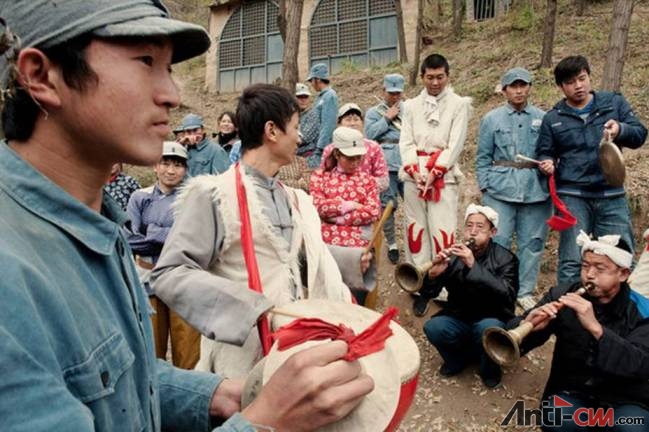
在中国延安,当地官员和商人利用时下流行的“红色之旅”大赚了一笔。所谓“红色之旅”,就是中国人,大部分都是年轻人,到著名的革命圣地去旅游,重新感受抛弃已久的阶级斗争和无产阶级生活方式。演员们表演一个小时的“保卫延安”演出,再次展现中国内战时期的重要场景。
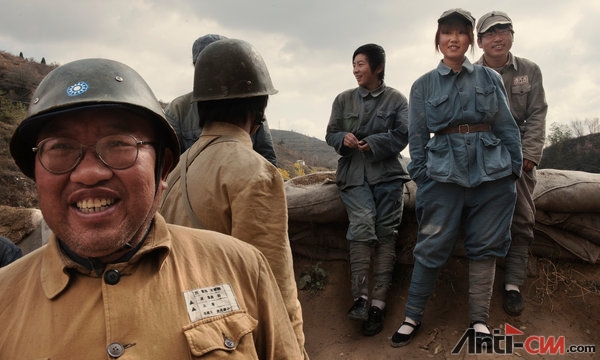
停电让“保卫延安”的演出暂停,这是一场再现中国内战重要场景的表演。延安正在发起“红色之旅”,试图唤醒中国过去的革命精神。资本主义虽然在中国大行其道,但红色远未褪去,至少在延安是这样。
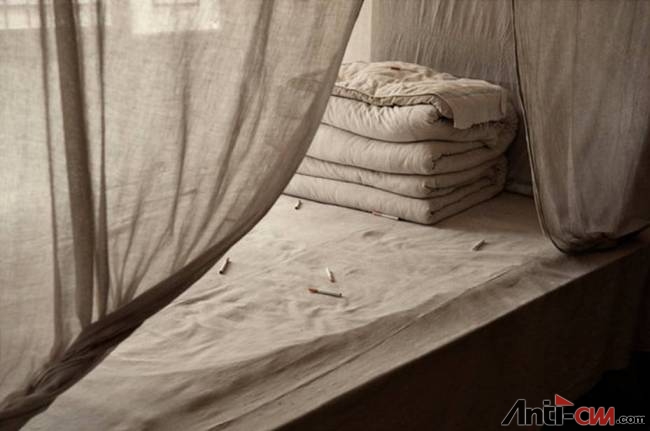
在延安,游客向据说是毛泽东睡过的一张床上投掷香烟,作为献礼。
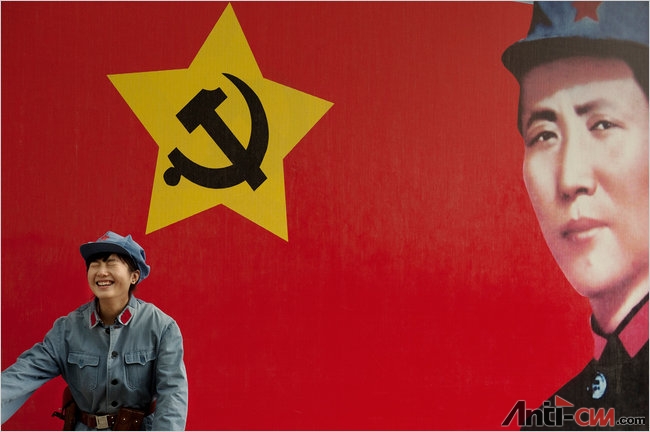
在杨家岭景点,一位游客打扮成红军士兵的模样,在同伴给他拍照时开怀大笑。她身后是年轻时期毛的画像。杨家岭是延安的一个狭窄的小山谷,共产党领导人曾经在附近的山洞中生活了几年。
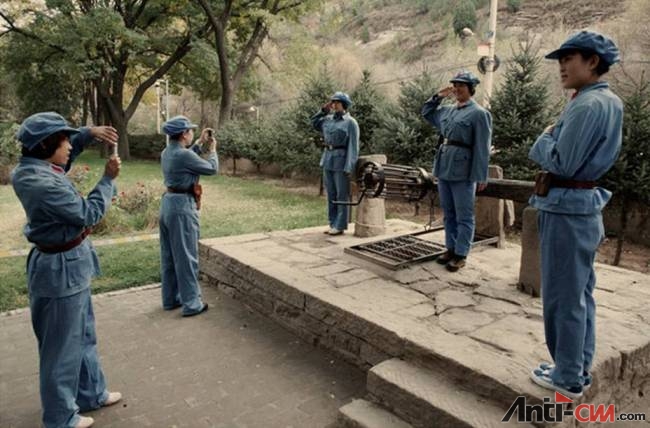
人们穿戴成红军士兵的模样在杨家岭互相拍照。延安地区有独特的窑洞和黄土峁,一直到1948年都是作为革命根据地。期间经历了二战期间日本人的轰炸,和共产党宿敌国民党的进攻。

共产党领导人就是在延安把贫贱的红军队伍打造成平民游击力量,并强力灌输了社会主义者的理念。一名游客戴上红军帽。
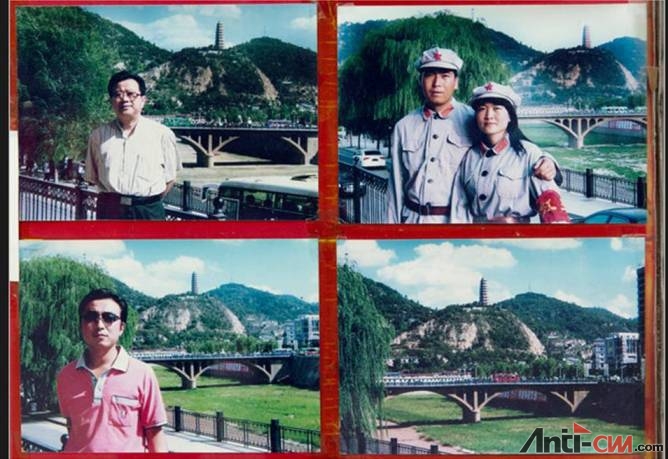
一个摄影室展出的游客照片。延安旅游局在网络上表示,当地的游客在去年超过了100万人,比前年增长了37%。

一处景点旁边的公告牌上贴着红军最著名的军事领袖,左起:朱德、彭德怀、林彪。

停电时,参与演出“保卫延安”的年轻演员在打发时间。这个演出最终被取消了。
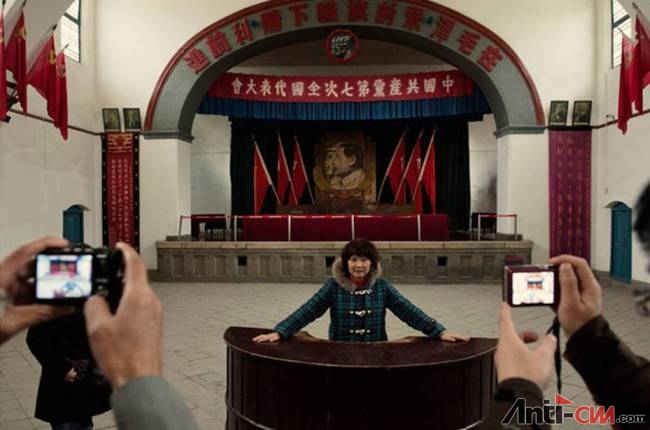
游客在参观杨家岭会场。经历长征之后,共产党领导人在1936年进入延安。

延安枣园的一个房间,被重建后试图展示朱德曾经工作过的环境。
炸药已经埋好,瞭望台上安排了守卫,战场的土地已经清理干净。共产党士兵手持步枪,在光秃秃的山脚下准备战斗。他们的敌人,国民党,从远处慢慢逼近,向延安的守卫部队发起进攻。
这时,突然有人喊到:“停电啦!”
没电,戏也演不成了。
数百名中国游客涌向大门要求退票。另外一些游客在战场上脱下灰色的军装——他们付了2美元来参加演出。
“保卫延安”的演出就这样泡汤了。这个长度1小时左右的节目主题是再现中国内战时期的重要时刻,即国民党在1947年试图在共产党的最后山区阵地中将其歼灭。演出中有真实的爆炸场面,还有用绳子吊挂的喷气式战斗机俯冲的场景。在中国北部陕西省延安市这个单调、乏味、两百万人口的城市郊外,每天上午都会上演这个节目。
资本主义虽然在中国大行其道,但红色远未褪去,至少在延安是这样。“保卫延安”是最近为吸引游客上演的节目,试图重现共产党在1936年长征之后进入延安的那段光辉岁月。当地官员和商人利用时下流行的“红色之旅”大赚了一笔。所谓“红色之旅”,就是中国人,大部分都是年轻人,到著名的革命圣地去旅游,重新感受抛弃已久的阶级斗争和无产阶级生活方式。
延安大学历史学家谭虎凹说:“商业化并不是坏事,只要我们不粗俗化传统、不亵渎传统。就像延安香烟的广告语一样——延安精神永放光芒”。
延安地区有独特的窑洞和黄土峁,一直到1948年都是中国革命根据地。期间经历了二战期间日本人的轰炸,和共产党宿敌国民党的进攻。共产党主要领导人——毛泽东、周恩来、朱德、刘少奇——就是在延安把贫贱的红军队伍打造成平民游击力量,并强力灌输了社会主义者的理念。
“我是来这里受教育的。”32岁的公务员马涛一边把自己矮胖的身体塞入一件红军军装中一边说。这里是杨家岭的入口,共产党领导人曾经在这条狭窄山谷的窑洞中生活了几年。出租服装的女人递给马先生一个手枪皮套。
“穿上这件军装我感到很自豪。”他的一个朋友——或者是一个同志——在给他拍照。
马先生和旅游团其它成员都在衣服领子上别了一枚毛的像章。那一天,包括一些来西安的现役士兵在内的数千名游客游览了这个革命圣地。延安旅游局在网络上表示,当地的游客在去年超过了100万人,比前年增长了37%。
2008年,当地政府决定取消主要景点的门票,游客因此大幅增加。同年,当地投资1500万美元修建了广场、博物馆和其它形象工程。当地官员和投资者甚至希望邀请中国著名导演张艺谋来制作“保卫延安”的节目,但最终他们只得到了与张的同事合作的机会。
旅游局网站上打出的口号是“延安革命圣旅”。但是,也有一些熟悉老延安的人反对当前的改建工程。
李敦白是一个商业顾问,是第一位加入中国共产党的美国人,他在40年代曾在此居住。他说:“这里有一种荒凉的美,这些原始的洞穴是中国战争期间运筹帷幄的场所。”
李敦白先生带着他的妻子在去年回到延安。他说他被那里的变化惊呆了。
“他们完全破坏了这个中国革命历史的博物馆,我觉得周围都是拙劣的模仿。当地导游不允许任何人批评毛,这是我了解到的中国唯一有人这样说的地方。他们对历史一无所知。”
在毛主席展览厅中,没有提到任何50年代大饥荒和文化大革命的事情,甚至也没有提及官方对毛功过七三开的评价。展品和图片提到了毛的战友,例如先于毛到达延安并建立根据地的年轻革命者刘志丹,但没有提到这些人后来被毛清除出党。
一个年轻的女导游领着一群中年男性游客,指着墙上的一幅照片说:“这是毛、江青和他们的女儿。”
一个男人凑过来仔细看了看,大声说:“那时的江青没那么难看啊。”
共产党领导人主要居住在延安周围的4个地方,其中最著名的是杨家岭。就是在这里的中央大礼堂中,举行了一些最重要的会议。1954年,在为期50天的第七次党代表大会中,毛确立了他在党内无可争议的领导地位,同时把“毛泽东思想”奉为党章。礼堂中的座位是木制长凳,可以容纳1000人。礼堂曾经被国民党的空袭摧毁,后来被重建。
毛曾经在杨家岭居住过的窑洞被完好地保存。蚊帐挂在床上,香烟散落在床单上,这都是游客扔在上面,作为一种供奉。沿着窑洞外的一条小路走下去,是一颗松树,旁边有一个牌子说明这是毛在1946年与安娜路易斯斯特朗,一名美国记者会面的地方。在接受采访中,他说出了自己标志性的名言:“一切反动派都是纸老虎。”
在延安的另一个地方,一座中央军委的老旧会议大厅明显展示了一些不合时宜的信息。一个木制高台周围挂的旗子提醒游客,毛和他的同志们也曾经提倡多党民主制度,目的是为了推翻国民党。当然,这已经是久远的过去的事情了。其中一个旗子上写着:“热烈庆祝抗日战争胜利和早日实现民主。”
原文:
In Yan’an, China, local officials and businesspeople are profiting from a boom in “red tourism,” in which Chinese, many of them young professionals, journey to famous revolutionary sites to rekindle their long-lost sense of class struggle and proletarian principles. Actors took part in a performance of “The Defense of Yan’an,” an hourlong re-enactment of a crucial moment in the Chinese civil war.
A power failure halted a recent performance of “The Defense of Yan’an,” a re-enactment of a crucial moment in the Chinese civil war. Yan’an promotes a kind of “red tourism,” tapping China’s old revolutionary spirit.
Capitalism is thriving in China, but red is far from dead, at least in Yan’an. Actors in the re-enactment of “The Defense of Yan’an” waited during a power failure.
In Yan’an, tourists have thrown cigarettes as offerings on the bed where Mao Zedong allegedly slept when he lived in the city.
A tourist dressed up as a Red Army soldier at the Yangjialing historical site in Yan'an.
At the Yangjialing historic site, a tourist dressed up as a Red Army soldier laughed as friends photographed her in front of a billboard displaying a young Mao. Yangjialing is a narrow valley in Yan’an where the Communist leaders had resided in caves for several years.
People costumed as Red Army soldiers took pictures of each other at Yangjialing. The Yan’an area, with its distinctive cave homes and yellow loess hills, was used as the main revolutionary base until 1948, enduring bombing by the Japanese during World War II and assaults by Kuomintang troops, the foes of the Communists.
It was in Yan'an that the top Communist leaders forged the ragtag Red Army into a populist guerrilla force and hammered home socialist ideology. A tourist wore Red Army garb.
A display of tourist pictures taken by a photo studio. The Yan’an tourism bureau says on its Web site that visitors to the city surpassed 10 million last year, up 37 percent from the previous year.
A billboard near a tourist site in Yan’an featured the Red Army’s most famous military leaders, from left: Zhu De, Peng Dehuai and Lin Biao.
Young actors in the re-enactment of “The Defense of Yan’an” killed time while waiting for the start of the show during the power failure. The show was eventually canceled.
Tourists visited Yangjialing Assembly Hall. The Communist Party leaders entered Yan’an in 1936 following the Long March.
A room in the Date Garden of Yan’an was reconstructed to look as it did when Zhu De worked there.
YAN’AN, China — The explosives had been set, the watchtower manned and the dirt battlefield cleared of rubble. Communist soldiers armed with rifles took up positions at the foot of the barren hills. Their foes, the Kuomintang, loomed in the distance, advancing on the garrison town of Yan’an.
Then someone yelled, “There’s no electricity!”
No electricity meant no show.
Hundreds of Chinese tourists streamed toward the front gate demanding their money back. Other visitors stripped off their gray uniforms on the battlefield — they had paid $2 to take part in the production.
So went a recent performance of “The Defense of Yan’an,” an hourlong re-enactment of a crucial moment in the Chinese civil war, when the Kuomintang tried to overrun the Communists in 1947 in their mountain redoubt here. The show, complete with live explosions and a fighter jet that swoops down on a wire, takes place every morning on the outskirts of Yan’an, a dingy city of two million in the northern province of Shaanxi.
Capitalism is thriving in China, but red is far from dead, at least in Yan’an. “The Defense of Yan’an” is a recent addition to tourist attractions that try to evoke the glory days of the Communist Party, after its leaders entered Yan’an in 1936 following the Long March. Local officials and businesspeople are profiting handsomely from a boom in “red tourism,” in which Chinese, many of them young professionals, journey to famous revolutionary sites to rekindle their long-lost sense of class struggle and proletarian principles.
“Commercialization is not bad as long as we don’t vulgarize the traditions and as long as we keep the spirit without violating it,” said Tan Huwa, a historian at Yan’an University. “It’s like the advertising slogan for Yan’an Cigarettes: ‘There is Yan’an, but there is also the spirit.’”
The Yan’an area, with its distinctive cave homes and yellow loess hills, was used as the main revolutionary base until 1948, enduring bombing by the Japanese during World War II and assaults by Kuomintang troops. It was here that the top Communist leaders — Mao Zedong, Zhou Enlai, Zhu De, Liu Shaoqi and others — forged the ragtag Red Army into a populist guerrilla force and hammered home socialist ideology.
“I’m here to be educated,” said Ma Tao, 32, a pudgy civil servant who was struggling into a Red Army costume at the entrance to Yangjialing, a narrow valley in Yan’an where the Communist leaders had resided in caves for several years. A woman renting out the costumes handed Mr. Ma a leather holster.
“I feel proud wearing this uniform,” he said as a friend — or rather, a comrade — snapped photos of him.
Mr. Ma and his tour group, all sporting red Mao pins on their lapels, were among thousands of tourists, including real soldiers from the city of Xi’an, wandering through the revolutionary sites that day. The Yan’an tourism bureau says on its Web site that visitors to the city surpassed 10 million last year, up 37 percent from the previous year.
Tourism got a big lift in 2008 when the local government decided to waive ticket prices to the main sites; the same year, the city invested almost $15 million to build plazas, museums and other showpieces. Officials and investors even wanted to hire Zhang Yimou, a well-known Chinese filmmaker, to produce “The Defense of Yan’an,” but they had to settle for one of his associates.
The tourism bureau’s Web site now boasts of the “Yan’an Revolutionary Holy Dream.” But there are those familiar with the old Yan’an who are not happy with the way renovations have gone.
“There was a stark beauty, this totally primitive cave city that was the brain for the whole war effort in China,” said Sidney Rittenberg Sr., a business consultant who was the first American to join the Chinese Communist Party and lived here in the 1940s.
Mr. Rittenberg took his wife to Yan’an last year. He said he was stunned by the changes.
“They’ve virtually destroyed this museum to Chinese revolutionary history,” he said. “I think it’s a real travesty.”
“The local tour guides will not allow anyone to criticize Mao,” he added. “It’s the only place in China I know of like that. They know absolutely nothing of the history.”
In the Chairman Mao Exhibition Hall, no mention is made of the horrors of the great famine of the 1950s or the Cultural Revolution, nor does there even appear the standard party-endorsed assessment that Mao was 70 percent right and 30 percent wrong. Displays or photographs showing Mao’s compatriots — for example, Liu Zhidan, the young revolutionary who set up a base in Yan’an before Mao arrived — give no indication that those people were later purged by Mao.
A young woman guiding a group of tourists, all middle-aged men, pointed to a photo on the wall. “This is Mao and Jiang Qing and their daughters,” she said.
One man peered closer. “Jiang Qing isn’t ugly here!” he yelled.
The Communist leaders lived in four different sites around Yan’an, the most impressive being the valley at Yangjialing. It was here in the Central Great Auditorium that some of the most important meetings were held. In 1945, during the 50-day session of the 7th Party Congress, Mao secured his position as undisputed leader of the party and enshrined Maoist “thought” in the party constitution. The hall, which could seat 1,000 people on wooden benches, was damaged in a Kuomintang air raid and has since been rebuilt.
The cave at Yangjialing where Mao lived for five years has been well maintained. Mosquito netting drapes over the bed. Fresh cigarettes lie scattered atop the sheets, tossed there by tourists as a sign of reverence. Along a walkway outside, pine trees and a sign mark the spot where Mao supposedly met in 1946 with Anna Louise Strong, an American journalist. In the interview, he uttered one of his iconic sayings: “All reactionaries are paper tigers.”
Elsewhere in Yan’an, an old meeting hall for the Central Military Command reveals more anachronisms. Banners draped around a wooden stage remind visitors that Mao and his comrades once advocated for a multi-party democracy, in order to unseat the Kuomintang. Those are distant days, indeed. One banner says: “Congratulations to the victory of the anti-Japanese war and achieving democracy as early as possible.” |